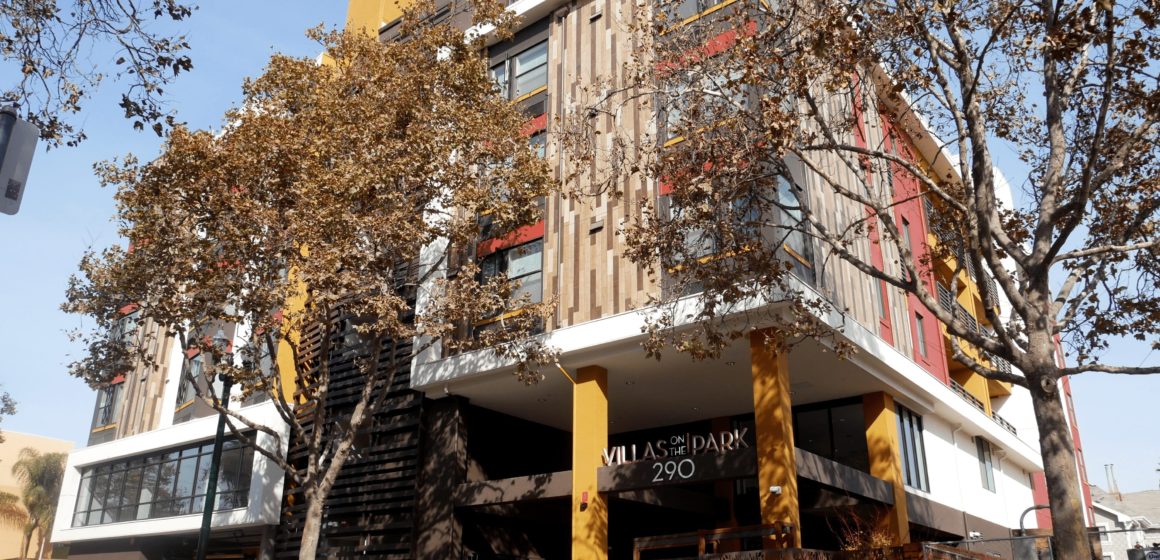As Santa Clara County starts to plan what the next five years of tackling homelessness will look like, officials have reviewed the past five years — what worked and what continues to be a challenge.
The county connected 17,485 homeless individuals to permanent housing as of 2024, and is on track and may even exceed the goal of housing 20,000 individuals by the end of 2025. But on the flipside, preventing more people from falling into homelessness remains a struggle, according to the 2020-2025 Community Plan to End Homelessness.
“We work really closely to have our system be tied together,” Santa Clara County Deputy Executive Consuelo Hernandez told San José Spotlight. “That is really what has been successful, is the political will to say yes to shelter, yes to housing (and) recognizing prevention is a critical component of stopping the inflow.”
Households were connected to permanent housing through various means, whether that was reuniting with a family member, finding an apartment on their own or receiving subsidies for rent through housing vouchers. A majority connected to permanent housing through vouchers, including 3,789 people placed in permanent supportive housing — 95% who have remained housed. Included in the nearly 17,500 people connected to stable housing are 5,514 individuals placed in rapid rehousing, a program that provides short-term rental assistance. Approximately 74% still remain housed.
In addition to connecting people to housing, over the last five years the county has added 1,240 shelter spaces — growing shelter capacity to 3,122 spaces — and expects to have a total of 3,858 in fiscal year 2025-26. More than 23,000 people have been served in the shelter system since 2020. Last year, 22% of people in the system moved into permanent housing, or nearly 1,750 people. Half of them received rental subsidies.
The county also expanded its Homelessness Prevention System by 65% to serve more than 2,500 households each year. The system provides rental subsidies to those on the verge of eviction. In 2023, families received an average assistance of nearly $7,400.
But the county faces a rocky future as it charts the next five years and struggles to keep up with the number of people falling into homelessness.
The county set to reduce the inflow of new households becoming homeless to 3,330 by the end of 2025. However, last year 4,098 new households fell into homelessness, about 200 families less than the year prior — and about 800 households higher than its goal for this year. In 2024, for every one person housed, 1.8 fell into homelessness.
Homelessness is at an all-time high in Santa Clara County with 10,711 homeless residents, compared to 9,903 in 2023 and 10,028 to 2022, based on preliminary results from this year’s point in time count conducted in January.
This has happened despite significant investments in temporary and permanent housing, with more than 1,300 affordable apartments constructed over the past two years funded through Measure A, a $950 million affordable housing bond approved by voters in 2016.
“I really think it’s a math problem at this point. We can give services all day long and it’s never going to change the fact that nobody can pay the rent,” Debra Townley, who serves on the Community Plan to End Homelessness steering committee, told San José Spotlight. “Everyone can get healthy mentally (and) physically, everybody can get trained on a new job. But if they can’t pay the rent, they’re still going to be homeless.”
As the cost of living continues to increase and looming federal cuts undermine social safety nets, more people will face precarious circumstances. In addition, state funding for homeless solutions could be slashed for the next fiscal year, sending cities and counties scrambling to close the funding gap.
 Santa Clara County officials said they remain committed to finding solutions to reduce homelessness. As the county strategizes the next five years, officials are focused on maintaining the current shelter capacity over the next year. It’s also conducting a randomized control trial for rapid rehousing to find what works in the system.
Santa Clara County officials said they remain committed to finding solutions to reduce homelessness. As the county strategizes the next five years, officials are focused on maintaining the current shelter capacity over the next year. It’s also conducting a randomized control trial for rapid rehousing to find what works in the system.
“We’re really committed to demonstrating the effectiveness of these programs so that we can show that these public dollars are, in fact, having a positive impact on thousands of folks in our community, even though we still are in the midst of the homelessness crisis,” Kathryn Kaminski, acting director of the county Office of Supportive Housing, told San José Spotlight.
Officials are waiting to see what cuts will come down from the federal level before diving into creating the next phase of the Community Plan to End Homelessness. Although the federal budget needs to be finalized before the close of the fiscal year in September, the Trump administration is aiming to have it done by July 4.
“The (office of supportive housing) team is very creative. They’re always looking at streamlining their operations, reducing costs, leveraging other resources in the county,” Hernandez said.
Contact Joyce Chu at [email protected] or @joyce_speaks on X.



Leave a Reply
You must be logged in to post a comment.